This is a guest post by Dr. Tatjana Buklijas. Tatjana is Associate Director at Koi Tū: The Centre for Informed Futures, and a Senior Lecturer in Global Studies at The University of Auckland.
This post is based on a Business Lab podcast featuring Tatjana and Dr. Jenny Wigley of Watercare talking about their research.
Over six weeks in June and July 2021, several thousand Watercare customers received invitations to participate in a workshop organized by Watercare and a University of Auckland team. The purpose of these workshops was to start a conversation about the future of Auckland’s water supply. Four Saturday workshops at two-week intervals in four different parts of the city – starting from the West Auckland, through Central Auckland and North Shore, and finishing in the South – were organized, to ease access to residents across the city, but also to investigate whether people living in different neighbourhoods had different views. Out of the several hundred who expressed interest in participating, for each workshop we recruited a group of 30 participants whose demographic composition mirrored, as closely as possible, the demographic makeup of our city. There were young parents who brought their children, retired aviation engineers, electricians from Mangere and students from North Shore. Most of them had never taken part in a public consultation. Most of them knew very little about water governance – in fact, while aware of the recent drought and restrictions, many had not understood water supply in our city as a problem in the long run.
And yet we expected them to spend three hours thinking about what water means to them and to the city, hearing from Watercare and university experts about potential technical solutions that must be built by around 2040 to secure sufficient water supply, and then discussing their preferences with the people they’d just met. Our expectations were high, but our participants exceeded them.
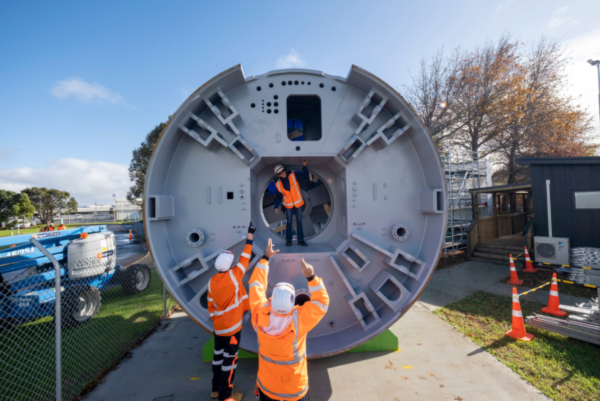
Participatory democracy vs. deliberative democracy
These workshops were part of a research project investigating how forms of citizen involvement in public decision-making coming out of the field called deliberative democracy could be used in Aotearoa New Zealand. They could, we think, replace at least partly the current forms that all come from the tradition of participatory democracy. Namely, both participatory and deliberative democracy seek to enhance and complement the contemporary representative democracy. Participatory processes, drawing on the legacy of the civil rights movement, allow citizens to have direct input in public policy decisions. In Aotearoa New Zealand participatory democracy is enshrined in law through the Resource Management Act 1991 and Local Government Act 2002. The boards of inquiry and the environment court; public consultations on strategic documents and plans, “town halls”, all the way to simple “have your say” surveys – all of these are now well entrenched in the ways in which the institutions operate.
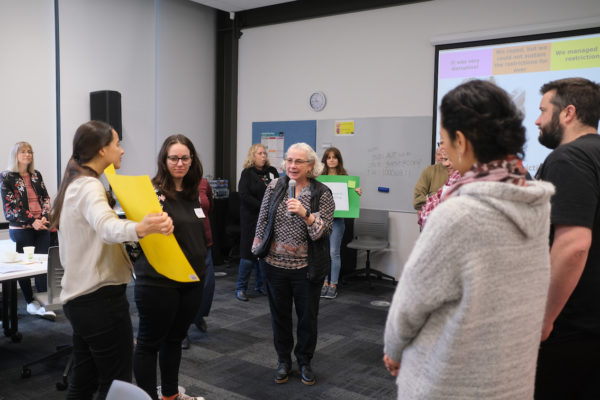
Creating a representative participant group
Yet while participatory processes are widely used, they are also flawed. First, the people who tend to take part are usually privileged: they have money, time, education, and confidence. An excellent piece a few years ago showed how the demographic composition of submitters to the Auckland Plan 2050 plan did not match the demographic composition of the urban population: the “loudest voices” were older, wealthier, and whiter, than our city is today, let alone of the 2050 Tāmaki Makaurau. My own first serious experience of a participatory process, as submitter to the East West Link Board of Inquiry, showed me that even for a well-resourced academic, equipped with experience in public speaking and access to scientific publications and knowledgeable colleagues, standing in front of a panel of judges whilst presenting my submission felt daunting.
Second, participants tend to be those who have a stake in the issue; and often those who have – or think they have! – something to lose. The infamous Auckland Transport St Heliers town hall comes to mind.
The third aspect – that the participatory processes are designed for people, or groups, to present their or their group’s position; that they are not well set up for finding a common ground between those holding opposing views; and that they do not require participants to be well informed about the question under consideration – is less discussed. And yet, the issues that we are trying to solve today are getting more, not less, complex. Understanding the need for decarbonizing transport or climate action more generally entails technical knowledge, thinking far ahead into the future and holding a range of scenarios in mind. Action on climate in particular requires profound shifts in the way that we live today; trade-offs involved need to be crystal clear to everyone, and everyone must be on board. But what we have, instead, are brief encounters made even more polarized in the “information bubbles” of social media.

Citizens’ assemblies: finding shared ground
Internationally, a different type of citizen engagement processes is gaining traction, drawing on the body of knowledge known as deliberative democracy. Deliberative democratic processes come in a variety of shapes and sizes – from the tiny deliberative cells to large citizen assemblies – but they all share some key elements. First, the people involved are randomly selected from the target population – be it a neighbourhood, a city or a country – in a manner similar to jury selection. Second, they are given a clear remit by the commissioning body, and a commitment to take their recommendations into account when making decisions. Third, they’re well-resourced to engage with the question: they are given enough time, access to relevant knowledge and experts (often of their choice); they’re paid for the hours spent; food and adequate space is provided. And finally, then, they are expected to find a shared ground: perhaps not the solution they are the most passionate about, but something they can all “live with”.
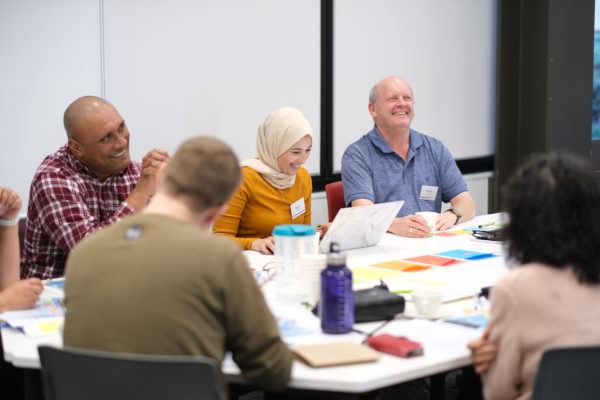
Thinking beyond the political term
The reasons for the growing popularity of deliberative processes are, likely, many. Some scholars explain it as a response to the disillusionment with the current democratic formats. Politicians participating in three or four year-political cycles are not incentivized to think about long term, intergenerational problems. Experiments in direct democracy such as Brexit have resulted in such deep, unexpected and, likely, unfavourable results that – although referenda offer citizens a direct way to express their opinions – other solutions seem much more attractive. As indicated earlier, the complex, intergenerational nature of problems we are facing today – climate change in the first place but also the entrenched inequality – also seem to require new solutions. This is why several countries have recently called for “climate assemblies”, or deliberative processes involving groups of around 150 citizens who over multiple weekends learned, discussed, and then made recommendations on policy solutions to the climate crisis.
While the extent to which their proposals will be implemented differs case-by-case, what is clear is that the citizens assembled are capable of understanding the urgency of the climate crisis and proposing innovative and brave solutions. These good results confirm once again the scholarly arguments in favour of deliberative processes. It is not just that the diverse groups of people should be in the room because it is an equitable thing to do; it is also the case that a cognitively diverse group will come up with a better solution than a group of 55 year old economists. We too saw the “collective reason” in action in our workshop where we intentionally mixed people of diverse ethnic backgrounds, ages, professions, educational attainments. The breadth of lived experiences and knowledge was astounding, and they came together in insightful questions and comments.
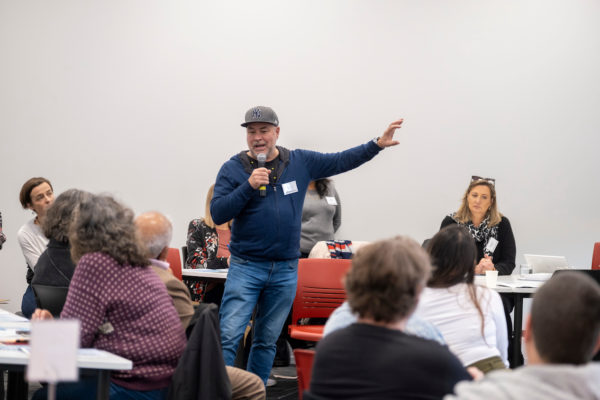
Packaging big problems into local solutions
Large national assemblies, be it those on climate or the Irish citizens’ assembly that then led to the historical 2018 referendum that made abortion legal, are well known. Yet in my view the greatest potential lies in the uses of deliberative processes at local level. The British policy scholar Rebecca Willis convincingly argues that the big, intractable monster of climate change is best “packaged and parcelled” into something meaningful at local levels. We too observed that in our workshops. Changing rainfall patterns in our city, and resulting restrictions, presented an excellent opportunity to talk about the changing climate. With the Three Waters Reform centralizing the technical part of the water governance, it is a good moment to rethink the remaining local governance: should it all stay at the level of councils? Or should the workload, and power, be distributed among citizens, in deliberative processes?
The recently launched Local Government Review offers an opportunity to take these international experiences and literature into account, while also thinking about local pressures. One important aspect of our “deliberative democracy in Aotearoa” – one that we are thinking through – is how to make deliberative models aligned with the principles of Te Tiriti and tikanga; but here too the local level seems to provide a better place to start. Our workshops were not full deliberative processes as their objective, other than designing the process, was to gain an insight into what the citizens of Tamaki know and understand about the water supply. They were not asked to produce recommendations. What we could see, however, is that under right conditions encounters around complex issues need not be divisive, and can lead to productive solutions.
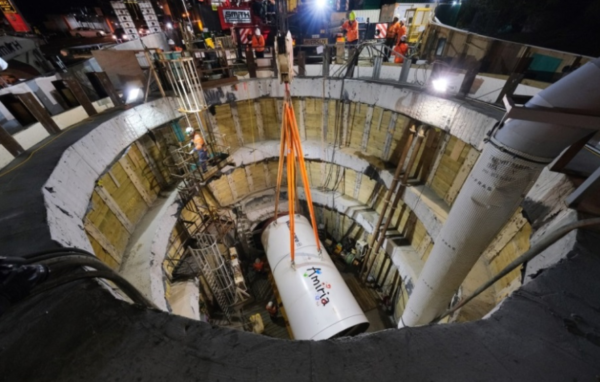
Tatjana is Associate Director in Koi Tū Centre for Informed Futures and Senior Lecturer in Global Studies at The University of Auckland. She is a medically trained science & technology studies scholar and historian of science, with a longstanding interest in the relationship between urban environments and knowledge production. Views expressed in this article are her own. Her current project is asking how deliberative democracy combined with local and indigenous knowledge and other academic approaches e.g. education can be used to address complex problems faced by our city and country. https://www.complexconversations.nz/

 Processing...
Processing...
I was invited to the Waitakere workshop and found it a very engaging and valuable experience. As it was on “free public transport” Saturday I took a bus service that was new to me and saw the massive amount of development coming down Sunset Road into the back of Henderson – it put the discussions of water shortage into perspective. Watercare were most interested in a “pick a water processing solution, A,B or C” approach but seemed to be blind to wider environmental context – no concern for sea water? Thank you to Tatjana and Koi Tū for giving me that experience.
So lovely to hear from a participant! (and btw, you will hear from us – we were very busy with workshops, and then the lockdown ) I can’t speak for Watercare but you might be interested to hear that the questions you asked (including the impact of brine on sea environment) have been heard by the Watercare and were addressed much better in my view in later workshops. This was really the point of the iterative process, both for us interested in the process, and Watercare, interested in the specific question.
The gradual improvements from one session to another is something that I found really interesting on the podcast. I think it showed both Watercare and Koi Tū were valuing the feedback and the process.
Excellent piece.
Council is currently reviewing its Significance and Engagement Policy. Given Council is not meeting some of its goals because it’s allowing old-fashioned “participatory process” to interfere, this subject of the type of engagement processes needs to be a central focus.
Are Councillors governing well here, ensuring Council officers have been given a scope broad enough to actually look at updating the democratic processes when engaging with the public?
The East West link board was daunting for everyone except the Requiring Authority team. Any time a Government wants a particular result they simply appoint a retired High Court judge who hasn’t been given a knighthood yet. I have appeared at dozens maybe hundreds of hearings and appeals and a few High Court cases and it is not often you meet someone in a hurry to approve something. Almost all processes are better than that.
I agree Miffy feedback sessions , run badly, can be frustrating.
I presented at an AT feedback day. Talked for 7 minutes allowing 3 minutes for discussion. The AT Director spent 3 minutes saying my idea would not work as they had a better one. The next speaker whispered in my ear “They did not listen to a word you said” Seven years later I confirmed with the world expert who created the idea my version was correct and ATs interpreration was wrong! Rather frustrating. My learning- give longer for questioning so if they come back with an odd idea you have time to question it.
Ooohhh, what was the idea and who was the world expert?
Sorry Busy day! Open network BRT and Jarrett Walker
Waiukian believes that the Busway should operate as a series of L shaped express routes. He has mis-interpreted Jarrett Walker’s endorsement of an open busway to mean support for L shaped routes when he wrote an entire book to support the type of grif network that AT currently operate. The guy at AT has probably just pointed this out.
Waiukuian, please write a post about this.
I would be very interested to hear, I assume this is about the busway?
i just googled open network BRT – most interesting.
I can understand why it made some heads explode
Yes there can be a lot of headwork. Try BRT Planning guide for a detailed, but well written, explanation
Some councils have come out against the governments water reforms and want to do nothing.
But things need to change as councils are not doing enough
“More than 100 wastewater treatment plants are breaching consent.” 24 August 2020 RNZ.
A Land Air Water Aotearoa project has compiled results from more than 15000 sites.”Our analysis shows that impaired ecological health is evident at almost two-thirds of monitored river sites in New Zealand.”
50 years ago swimming in the rivers and beaches was very popular. Now raw sewage pours into the sea at many sites. Going to a swimminig pool was popular but now people are easily put off going when someone says the water is dirty and kids pee in the water.
People don’t trust the tap water and most people use very expensive bottled water and then throw away the plastic bottle.
This is new to me. Never heard of it before. Wish there was a similar thing for the Auckland transportation situation.
I would really like this to work ,re transport/roading issues,but it seems everyone has an entrenched view in this area. A group of caregivers, for example ,submitting on better walking options for getting their children to school,would probably end up with a raised crossing outside the school,and the council/AT says,job,done.
The Dutch style roundabout proposed for Hamilton ,lasted about 2 days,it is now being “reviewed ” by councillors,i.e back to traffic lights.
Need to be wary of the maxim
“An elephant is a horse,designed by a committee “
As I understand it, there was an error in understanding the traffic volume that it was still desired to have through that Hamilton intersection. If they got the vehicle entry volumes correct, they may have been able to make it work, but four single-lane entries might not be enough. Nothing wrong with the concept, but do the sums first. So not a governance problem, just a design problem.
That’s ass backwards traffic management. We should be decided the greater outcomes we want, then figuring out whether we can fit current traffic volumes through.
Yes, if Streetguy is correct, then this will need legal challenge.
Road reallocation is an official strategy within the NLTP. It is a method for reducing vkt, which is required to meet our international commitments to climate action.
No Council should allow the sector Barons to insist on “accommodating predicted vehicle traffic flows” when that method is debunked and a cause of our transport problems.
The problem in Hamilton is the opposite. The council officers recommended the Dutch roundabout, the councillors opposed it due to the slight decrease in capacity for motor vehicles.
Yes, I realise that. But the other piece of info from Streetguy is that motor vehicle capacity is erroneously being treated here as the most important factor in the technical analysis.
Even though Hamilton Council is required to provide safety for all road users, which requires, in this location, cycle lanes. And even though more people can be moved through a Dutch style roundabout than through the current one or through a signalised intersection – just not in cars.
Basically, the Councillor officers who tried to bring in a better design should have had support from WK and MoT about this roundabout best practice design. Instead, poor and debunked sector practices are being used to support the Councillors resisting change.
In other words,not really a serious proposal,put forward by people who knew it wouldn’t fly. Greenwashing at it’s finest,we tried our best ,but still maximizing the vehicle throughput was the only possible outcome being considered.lt will probably get watered down further as the land originally required for the roundabout ,will make excellent slip roads.The whole premise of this post would be an excellent opportunity to put past this project
No, I would say it’s not that. My guess is that this is the war between paradigms playing out in Kirikiriroa.
If what Streetguy says is true, this is a proposal from people using best practice transport planning being thwarted by the Barons of the sector who are insisting on regressive methodology.
I’m in one of those pictures! (not the workshops through) Finally famous on Greater Auckland 🙂
I think its a great idea, but I do have silimar reservations noted above around the organsiing authority being albe to control the narritive. Would be interested to understand how the organising authority tried to mitigate any (un)consious bias? Was it through the choice of facilitator, or maybe having representation from other interested/affected parties?
Thanks for the great question. It is true that those who organize the process have the control – but that’s not unique to deliberative processes. One way of limiting the risk is, as you say, through good facilitation that must stay neutral (to the point of not even saying ‘this is a good question’ – a very hard thing to do!). Another way is through allowing the participants to choose the experts participating in the process. Finally the organizing (commissioning) body must commit itself to respond to the recommendations whatever they are. And btw there are deliberative processes where participants set the agenda. However here the problem is that they rarely have the political impact.
I was talking to a friend recently he told me the Kumeu floods were caused because the council didn’t keep the culvert clear of leaves. I suggested that maybe the shear volume of rain might have had something to do with it. He is an ex school teacher and should know better than to take a simplistic view because it suits his political agenda.
At the other extreme I used to think we should leave things to the engineers however that hasn’t worked out to well on our roads. Any move to steer a middle path between the extremes would get my support as our society is becoming too polarised.
By dads neighbour had over 3m of rain on his lawn. Must have been a lot of leaves in a culvert!
If engineers and other experts cannot, with the aid of a few diagrams and case study photos, explain to a representative citizen group whatever the group needs and asks to be advised on, then how can they be expected to advise Boards or Council Committees or Environment Hearings to reach decisions? This model of deliberative democracy makes more sense than the other participatory methods. Charettes have been known to give good results, although perhaps more clearly steered by the organisers. Transparency and oversight of selection process, together with accountability, should make this the best way forward in NZ.
Traditional democracy have its flaws and often favours mediocre solutions or statue of quo.
That is why authoritative meritocracy government often has higher efficiency and able to solve long term issues.
Unfortunately authoritative government starting with good intentions eventually become corrupted and leaders are forced into dictator and favour theirs own personal interests over their people.
I believe this deliberative democracy may improve the shortcomings of traditional democracy to better compete with the increasing popular authoritative meritocracy government.
A concern about deliberative democracy is the person who facilitate the process cannot be corrupted.
The judges also cannot be bias to filter out result they don’t personally like.
The resources or information given to the panel must also be open and unbiased.
It requires careful systems such ad separation of power to keep accountability in check.
Thank you very much
This trial well deserves greater publicity and I hope that there will be a fuller report than the podcast when the Auckland Uni folk have had time to produce one. Just from the podcast it is clear that: participants were enthusiastic; personal invitations were appreciated; folk were able to change their mind; having Akl Uni involved increased trust (given Watercare’s catastrophic record on public consultation); most participants would be happy to be part of a deliberative process again. I’m not sure how the Watercare folk other than the immediate collaborator saw the process. Broadly, these findings echo what other deliberative processes overseas have been finding for many years. There is clearly pent up demand for better consultation. Looking forward to hearing that the Auckland Council moves in this direction. Maybe spend less on glossy policy statements and more on real consultation? Anyway, good on you all who organised this and who took part.
Hi there
I am keen to be a part of the deliberative democracy group sessions happening in Auckland and wanted to know how to be able to participate in any future sessions